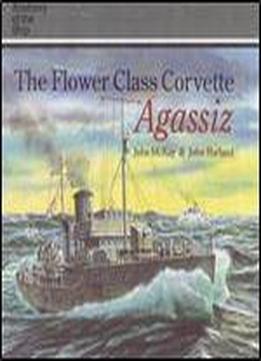
The Flower Class Corvette Agassiz (anatomy Of The Ship)
by John McKay /
1993 / English / PDF
89.7 MB Download
The subject of this book is a Flower class corvette built in Vancouver and commissioned in January 1941. Agassiz (pronounced Aga-see) in her as-built, short forecastle configuration differed considerably from the comAmon conception of the long-forecastle 'Flower', such as the museum ship I1MCS Sackville in Halifax, Nova Scotia, or the Greek corvette Kriezis (ex-Coreopsis) which represented HMS Compass Rose in the film The Cruel Sea, or 1/72 scale models from the popular Matchbox/Revell kit.
It was, however, the short-forecastle configuration that was in the mind's eye of Nicholas Monsarrat when he wrote The Cruel Sea, HM Corvette, East Coast Corvette and others, and this version best represents the Canadian Flowers as they were flung into the thick of the bitter Atlantic convoy battles of 1941-2, described in James Lamb's The Corvette Navy and Alan Easton's 50 North: Canada's Atlantic Battleground.
In 1939, like the other combatants, Canada plunged into a war for which her naval staff were ill prepared. Despite the U-boat campaign waged by Germany in World War I, little attention had been paid in the 1920s and 1930s to the problems of anti-submarine warfare, since it was widely believed that the future threat to merchantmen would come from surface raiders and from aircraft. The RCN had investigated the posAsibility of building escorts based on the handsome RN Halcyon class sloops, but these plans had not reached fruition by the time hostilities broke out. The timely arrival of plans for a 'Patrol Vessel of Whaler Type' from the British Admiralty in 1939 thus offered a solution to a very serious weakness in Canadian naval preparations for the new war. The corvette (as the new vessel became known) was widely seen as a stopgap until more sophisticated escorts were available, but in the event was built in great numbers.











